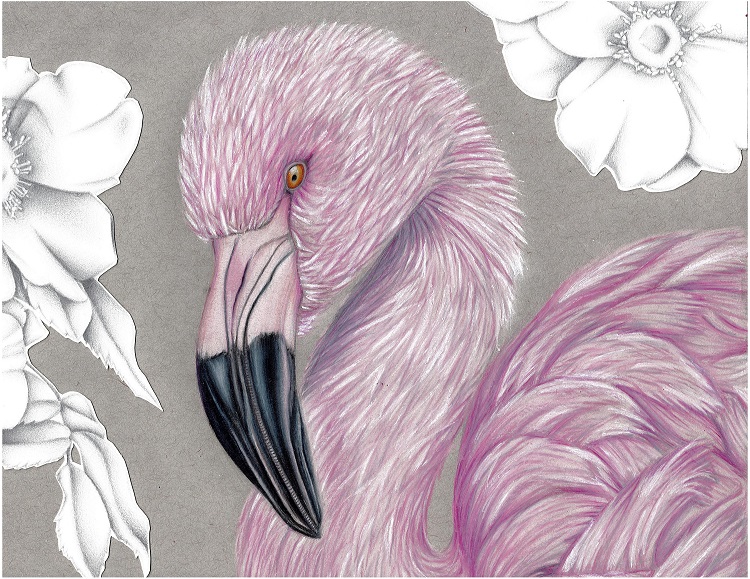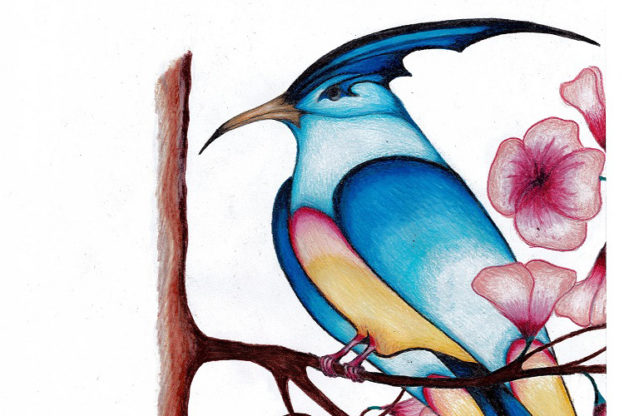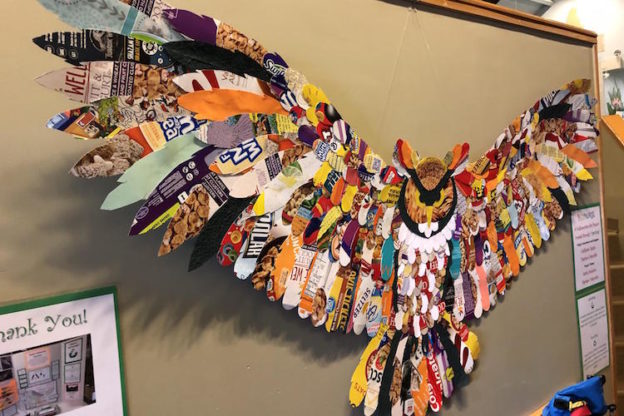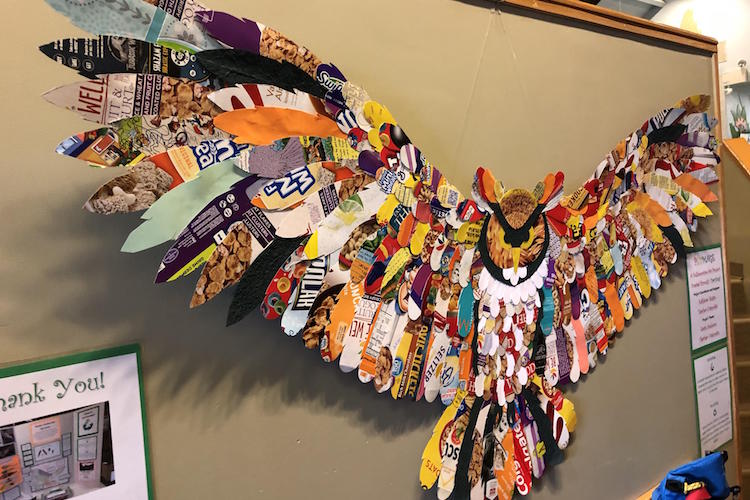This weekend marks the official opening of the Museum of American Bird Art’s 3rd annual Youth Art Exhibition. On display are 35 artworks were selected out of 277 entries and include a wide variety of mediums—colored pencil, ink, watercolor, acrylic, block print, pastel, markers, collage, and several mixed media pieces.
The opening reception is on Saturday in Canton and the exhibition will remain on view in the Estate House by appointment through March 31, 2019. In the meantime, enjoy four of the pieces on display, including an artist statement about each one.
Shoebill Stork by Mackenzie Casto, Age 12, Haverhill, Massachusetts
“I think the Shoebill Stork ties into the theme of favorite birds because it is one of the most unique birds alive today. It is also one of the birds that many people do not know exist. A quick look at the Shoebill Stork will make you think you are in the Jurassic time period because it looks prehistoric and that why it is one of my favorite birds!”
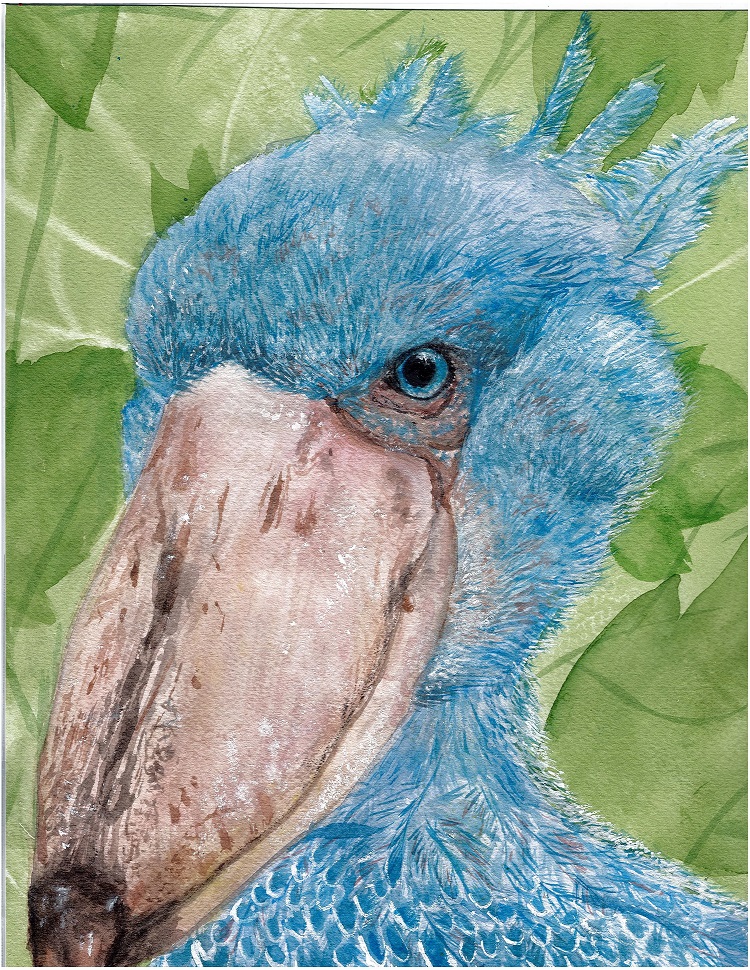
The Swordfish Bird with Salmon Flowers by Antonio Cortez Marques, Age 14, Portugal
“This swordfish bird comes from my imagination. I love bright colours, therefore I chose a mixture of colours which is somewhat unreal. I always liked attracting birds and animals. Usually, I like birds with long crests.”
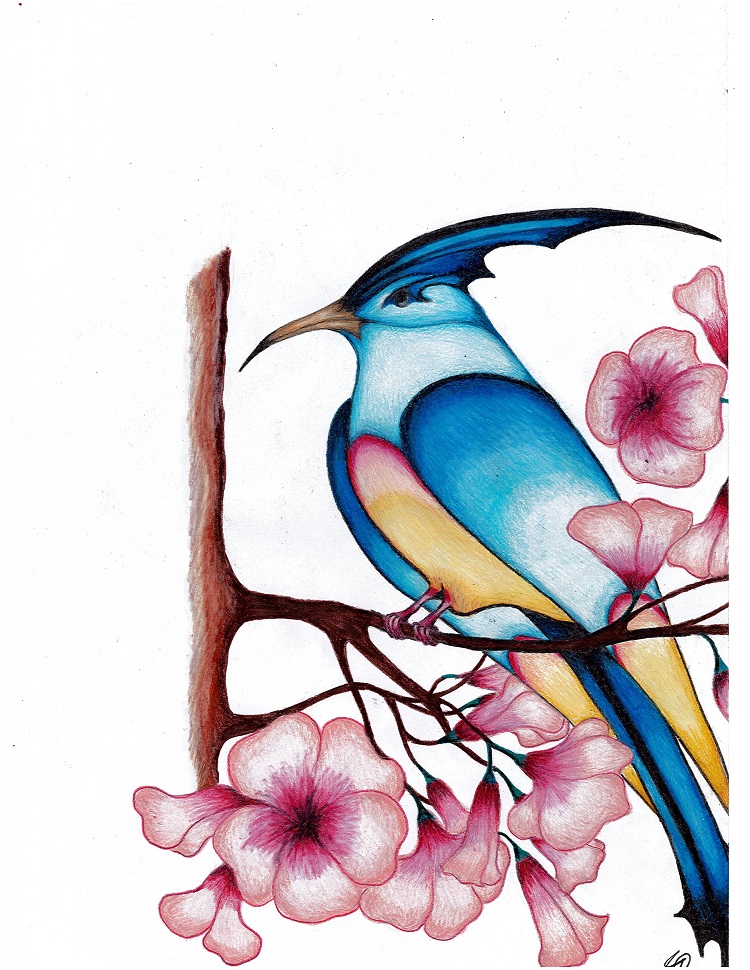
Peacock by Lucy Modern, Age 6, Pagosa Springs, Colorado
“I drew a peacock because they have beautiful puffy tails.”

Flamingo by Sabrina Puccio, Age 16, Canton, Massachusetts
“I recently started sketching flamingos after finding some old family photos taken at a zoo’s bird exhibit. Flamingos quickly became a new favorite bird of mine to draw, which is why I decided to enter this piece.”
